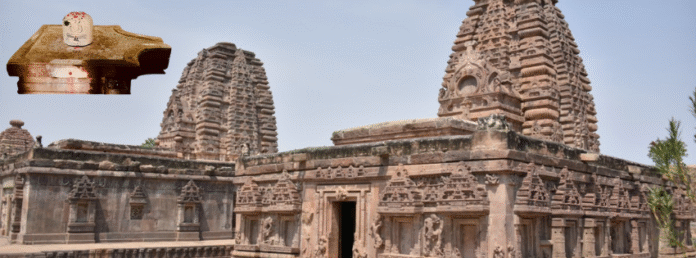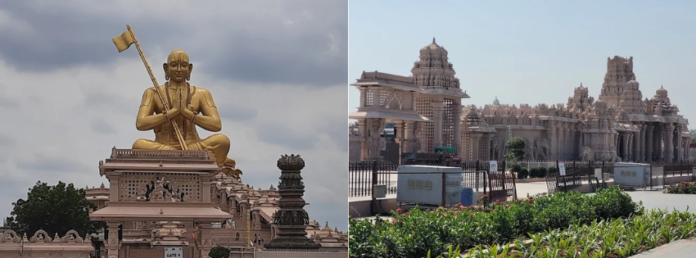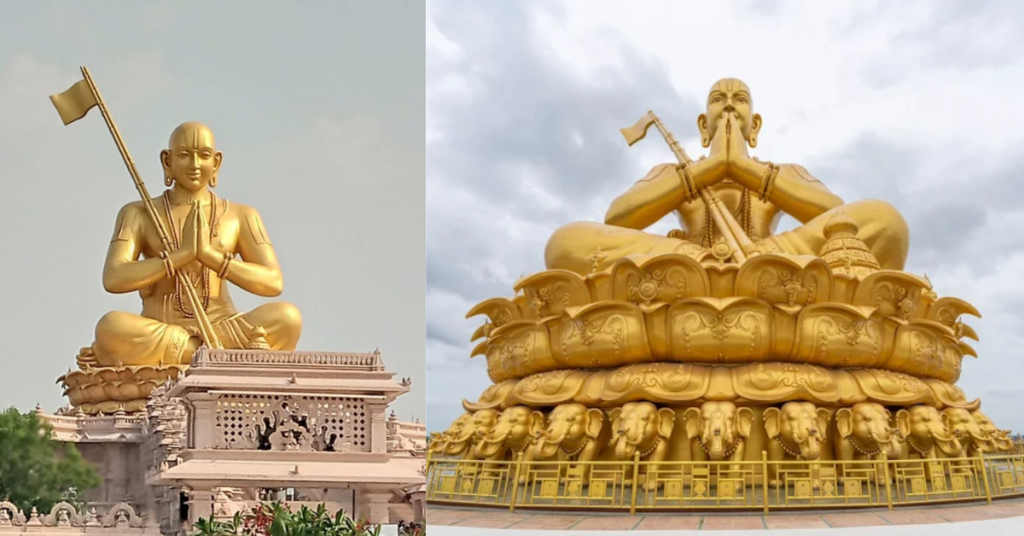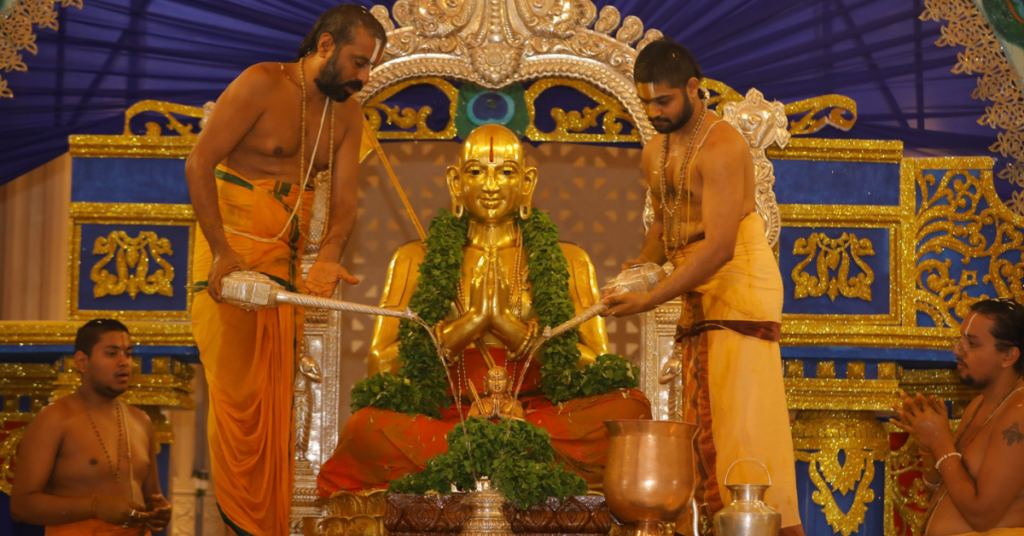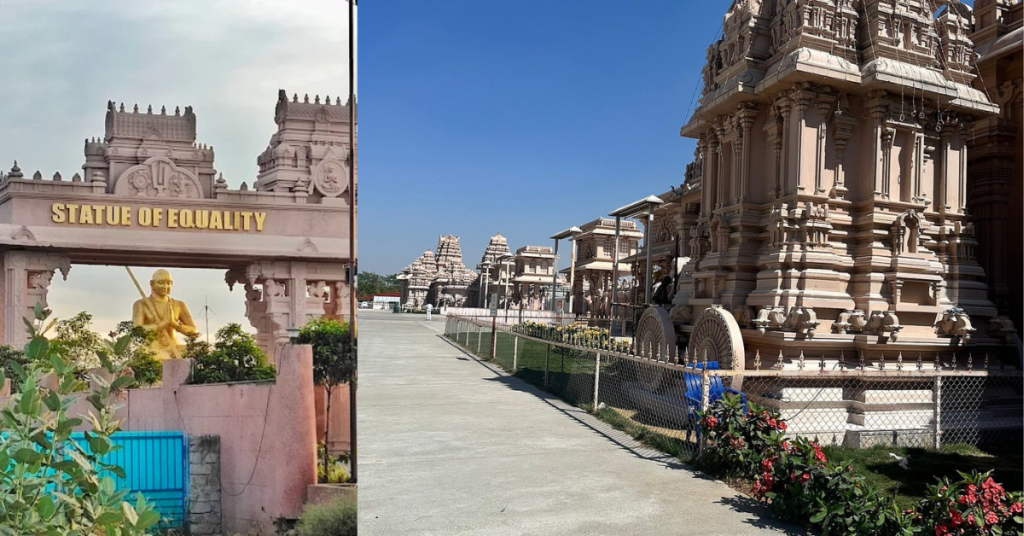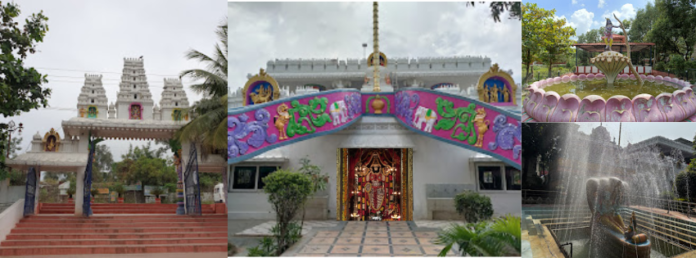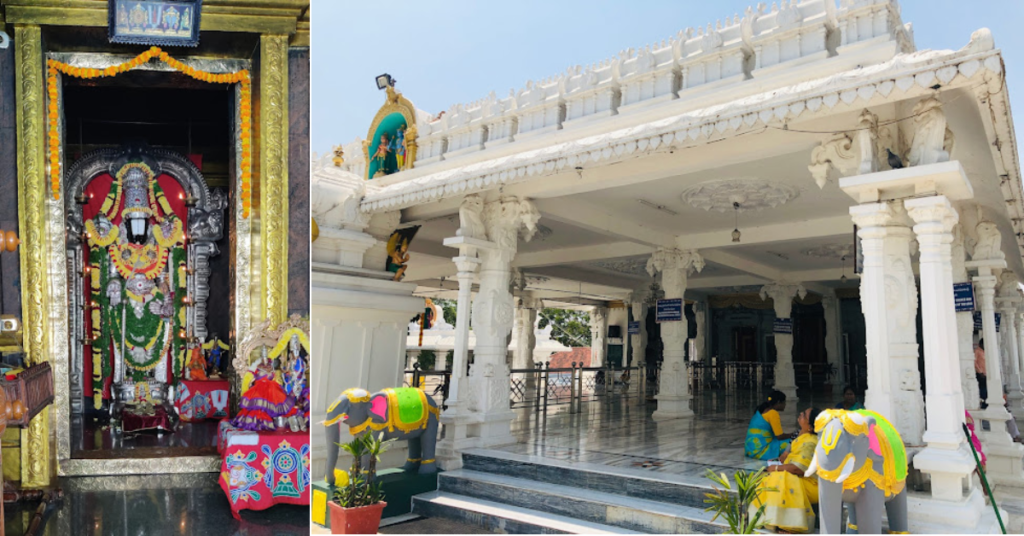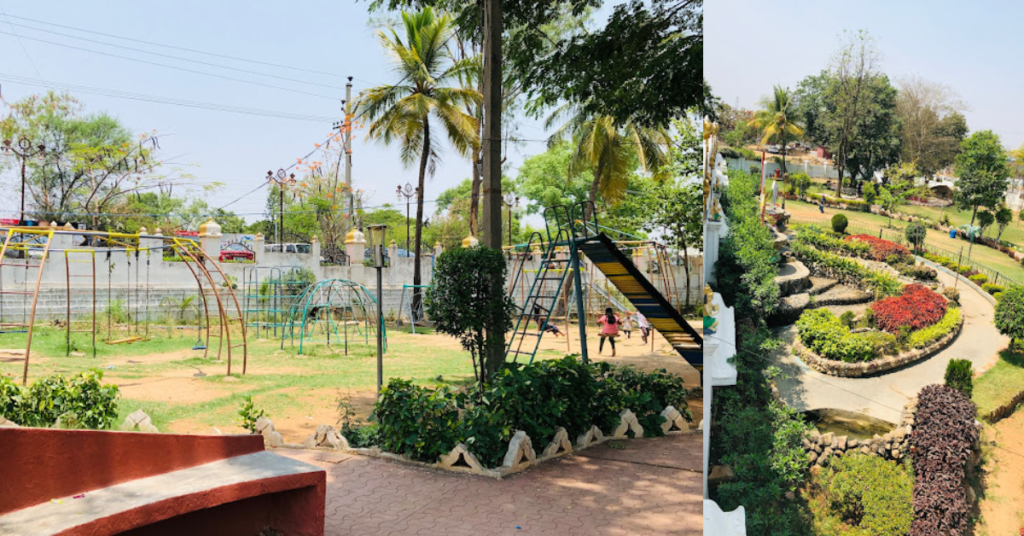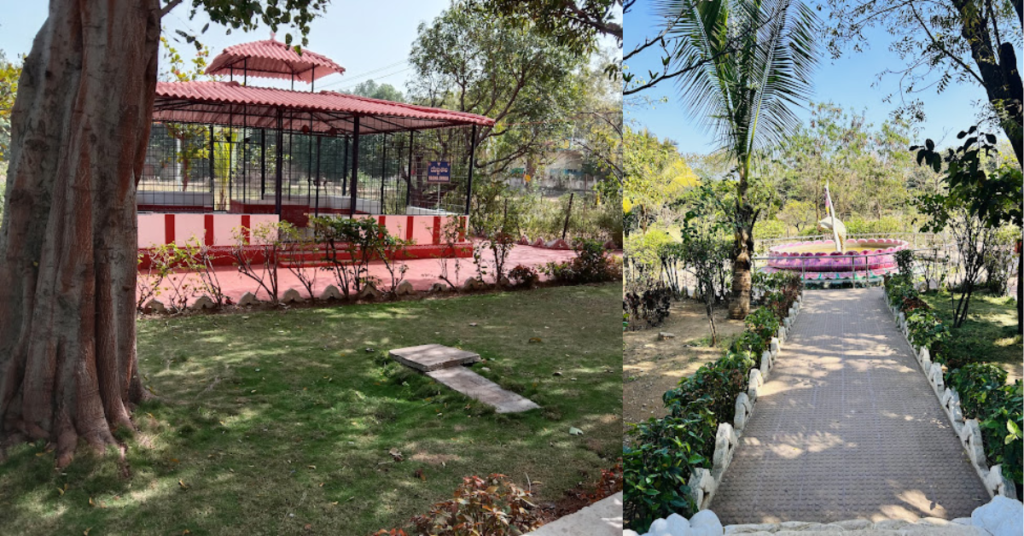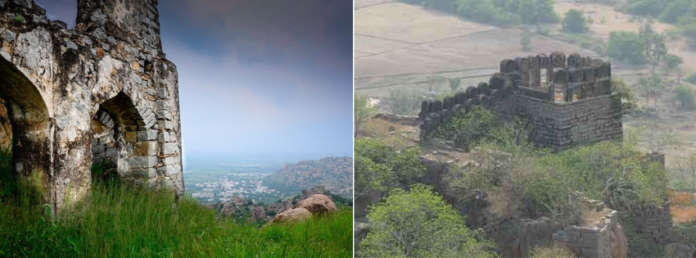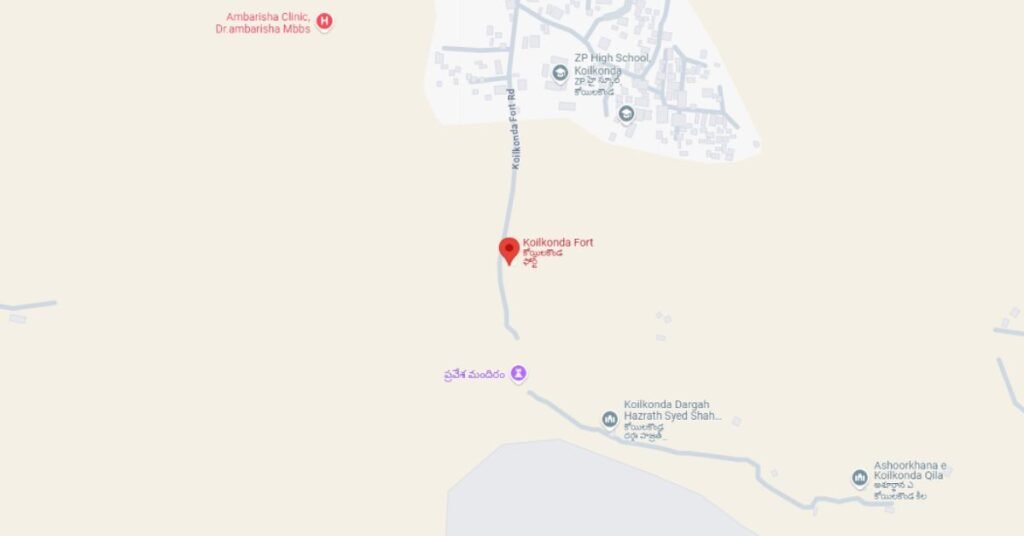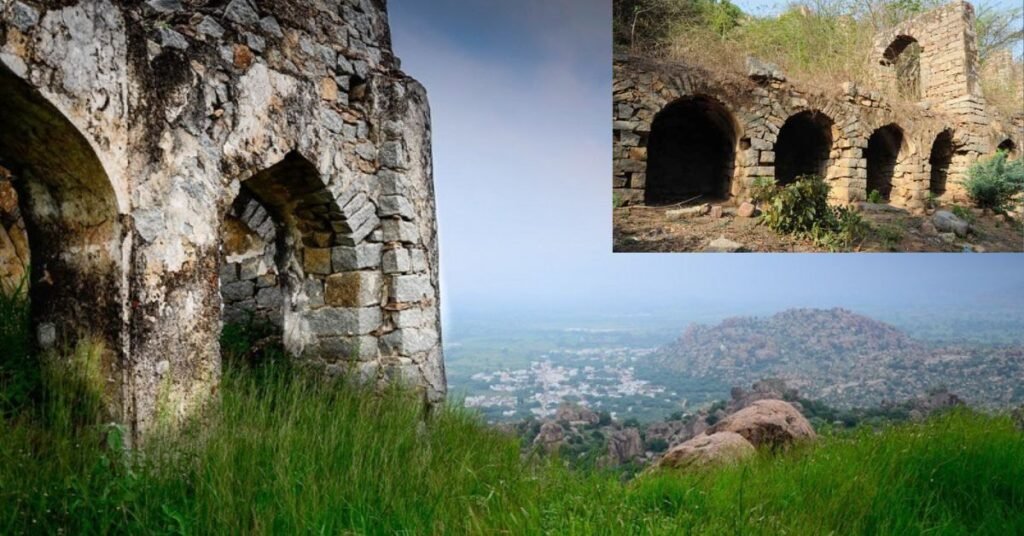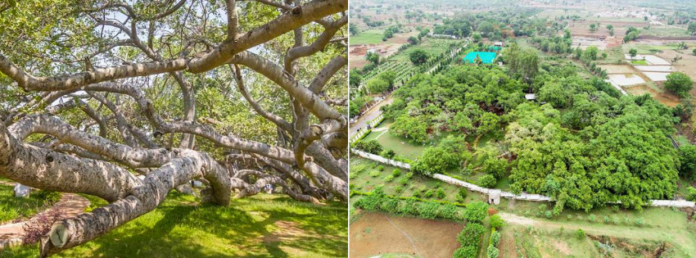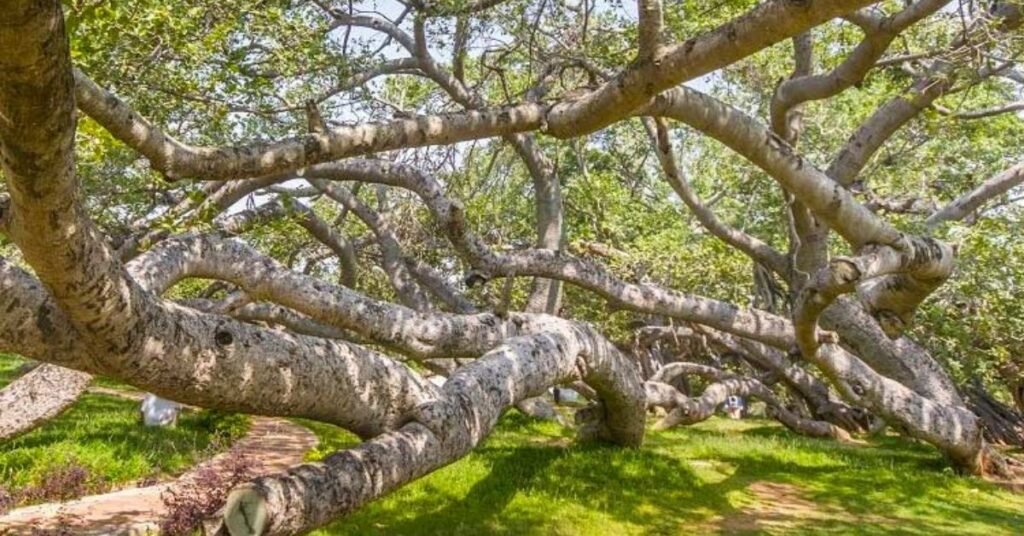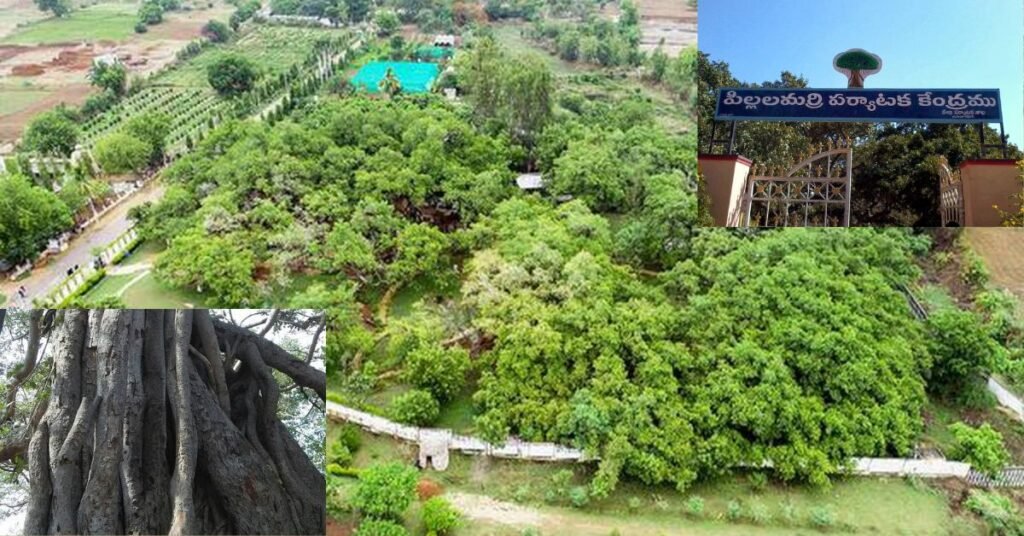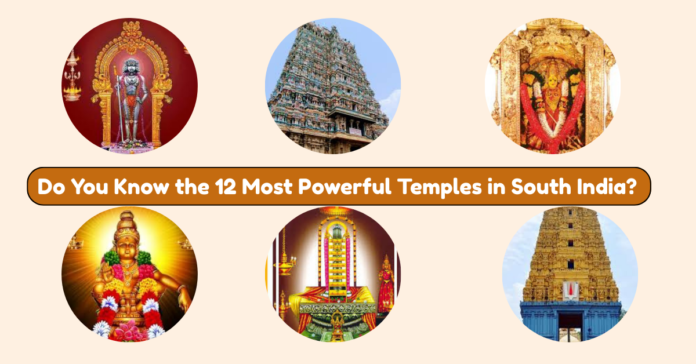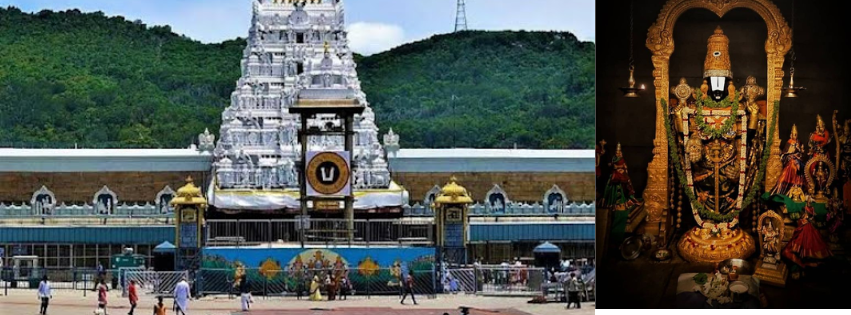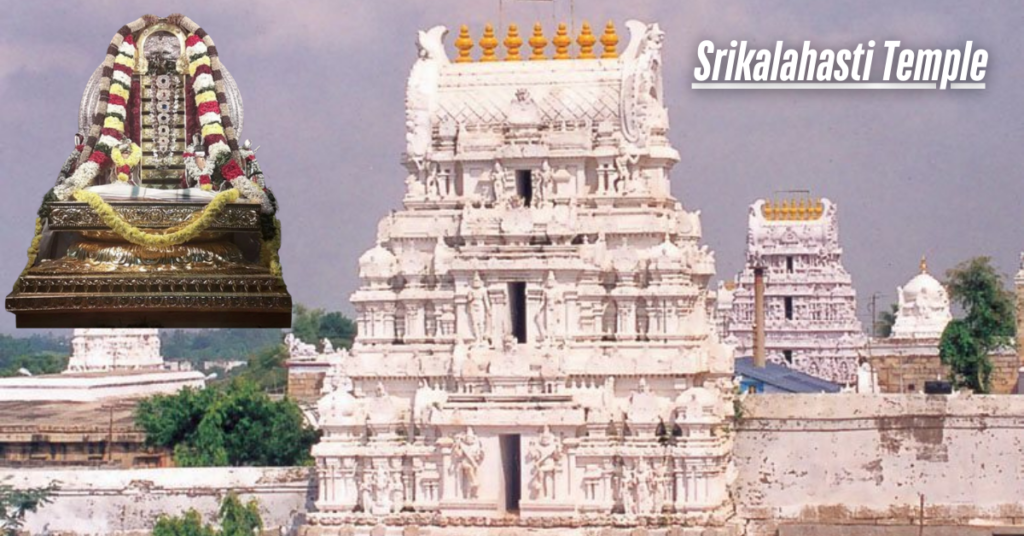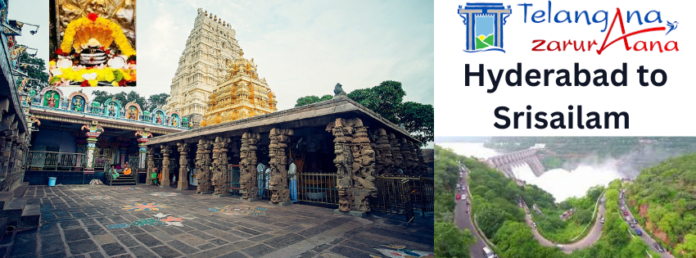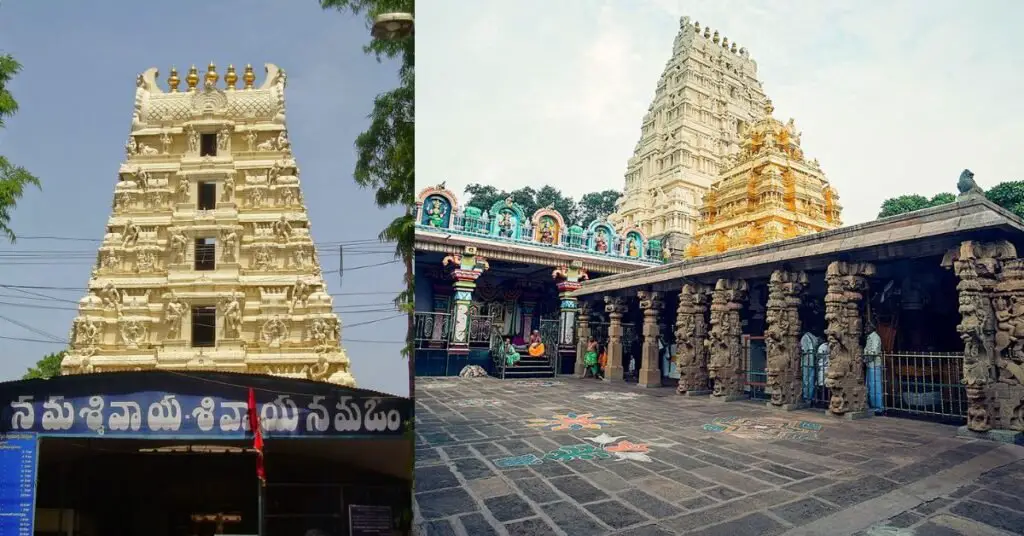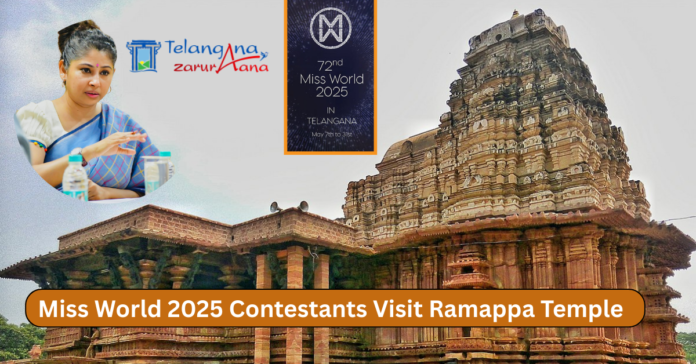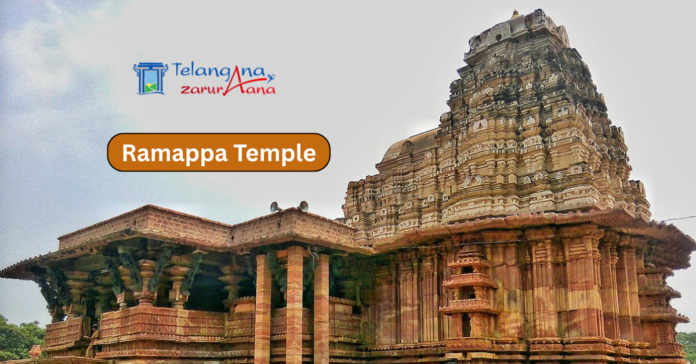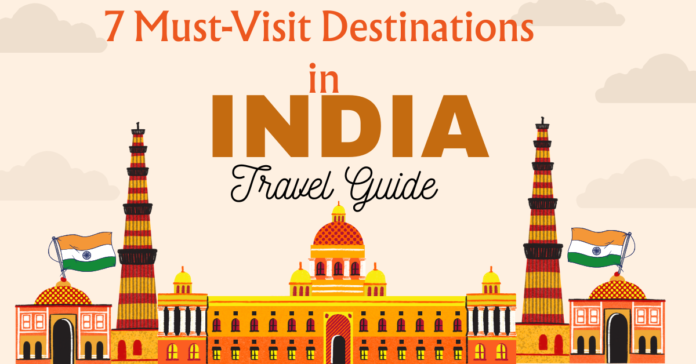Introduction:
Alampur Navabrahma Temples. At sunrise, as the priest lit 108 oil lamps at Jogulamba Temple, their reflections danced on the Tungabhadra River like celestial fireflies. At that moment, I understood why emperors and saints had knelt here for centuries.
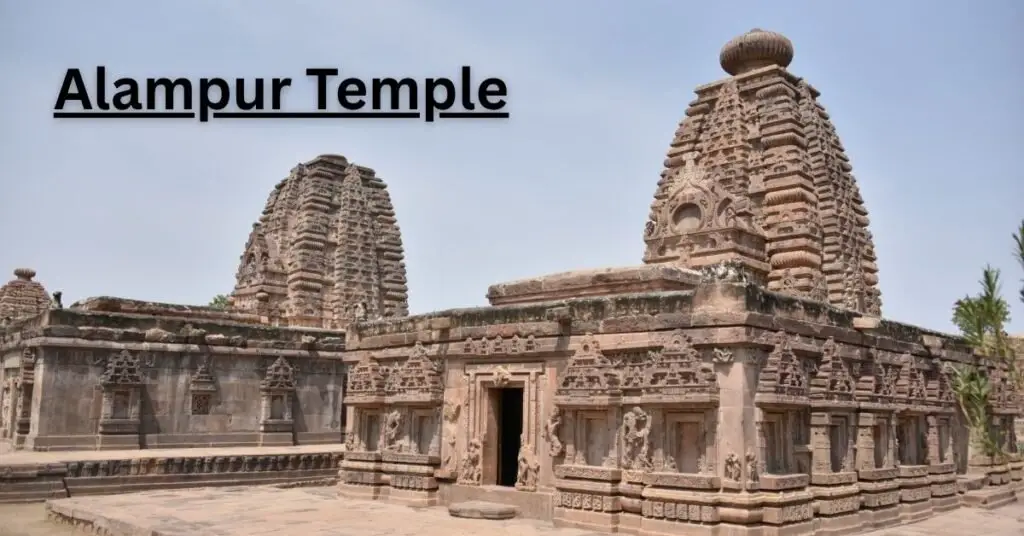
About the Temple: The Cosmic Playground
The Alampur Temple Complex is a sacred mosaic of two legendary sites:
- Nava Brahma Temples: Nine 7th-century shrines honoring Shiva’s cosmic roles (creation, preservation, destruction).
- Jogulamba Temple: A Shakti Peetha where Goddess Sati’s teeth fell, radiating fierce feminine energy.
Did You Know?
The complex is nicknamed “Dakshina Kashi” (Southern Varanasi) due to its spiritual potency. Even the river here flows northward, mimicking the Ganges!
Also Read: The Statue of Equality Hyderabad: A Monument to Humanity’s Highest Ideals
Temple History: Buried Alive, Resurrected
- 650–750 CE: Built by Badami Chalukyans using red sandstone and iron dowels.
- 14th Century: Buried under soil to protect from Islamic invasions, forgotten for 600 years.
- 1952: Rediscovered by archaeologists after a farmer’s plow hit a carved Nandi bull.
- 2005: Jogulamba Temple reconsecrated with Vedic chants heard after six centuries.

Ghost Story:
Locals swear the original Jogulamba idol (now in a museum) still “weeps” during eclipses.
Also Read: Exclusive of Top 8 Ancient Forts & Palaces in Andhra Pradesh
Temple Details: Plan Your Divine Encounter
⏰ Alampur Navabrahma Temples Timings
| Temple | Morning | Afternoon/Evening |
|---|---|---|
| Nava Brahma Temples | 7:00 AM – 1:00 PM | 2:30 PM – 8:30 PM |
| Jogulamba Temple | 7:00 AM – 1:00 PM | 2:00 PM – 8:30 PM |
Pro Tip:
Visit at 6:45 AM to watch priests unlock the temples with 2-foot-long ancient keys!
🔥 Pujas & Rituals
| Puja | Significance | Timing/Details |
|---|---|---|
| Abhishekam | Purification with milk/honey | 7:30 AM daily at Swarga Brahma |
| Ashtotthara Archana | Chanting 108 divine names | 10:00 AM (₹350 per ticket) |
| Friday Vishesha Puja | Tantric rituals for Jogulamba | 6:00 PM (Red sari adornment) |
| Chandi Homam | Fire ceremony for blessings | Full moon nights (₹5,100 booking) |
Also Read: Complete Guide to Srisailam Temple Darshan Timings and Sevas
Famous Festivals: When Divinity Overflows
- Mahashivratri (Feb/Mar):
- All-night chanting, 1,008 lamps floated on the river.
- Insider Hack: Book hotels 6 months in advance!
- Brahmotsavam (Sep/Oct):
- Chariot procession with 9 decorated bulls.
- Secret ritual: Priests “walk” on water during Theertham.
- Navaratri (Oct):
- Jogulamba’s 9-night costume saga – from warrior to nurturer.
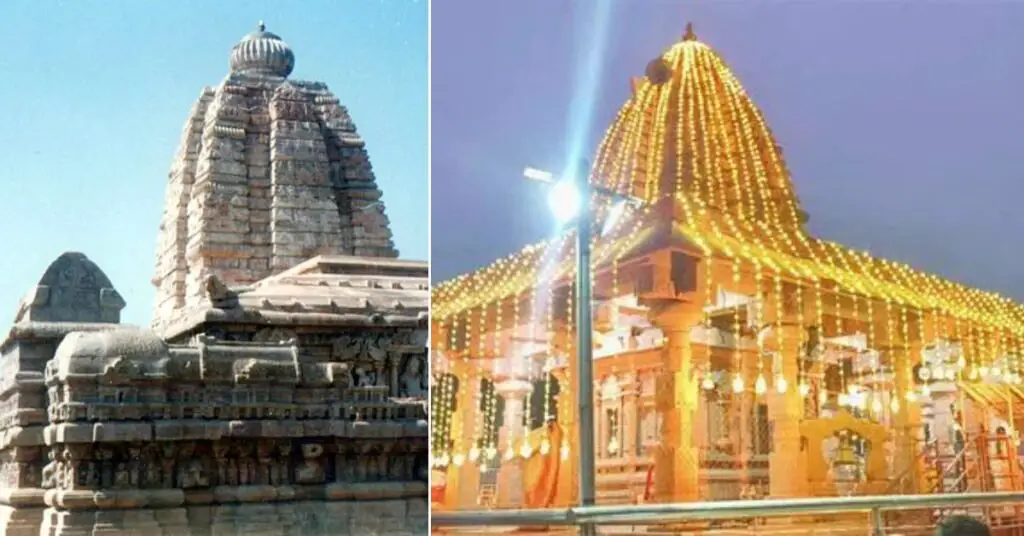
Also Read: Top 7 Must-Visit Destinations in India for a Perfect Family Vacation
Tradition: The Whispered Secrets
- Priestly Sign Language:
- 🤚 = “Wrong offering”
- ✊ = “Evil eye detected” (they burn chili-lemon charms)
- Echo Ritual: At Padma Brahma Temple, whisper a wish into the dome – if it echoes 7 times, Shiva grants it.
Alampur Temple Complex Location On Maps:
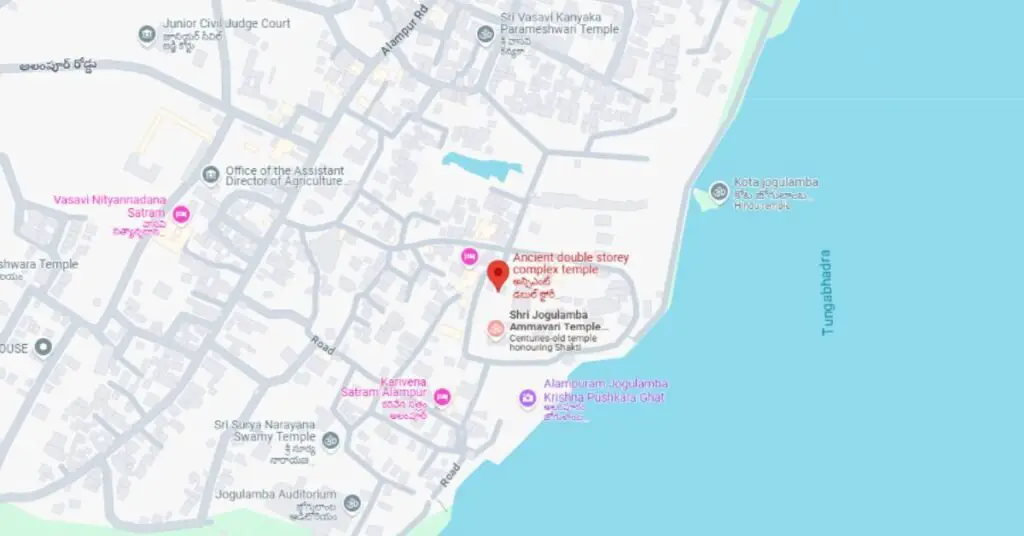
Getting There:
- 🛫 Nearest Airport: Hyderabad (200 km) – Book flights 8 weeks early for 30% discounts!
- 🏨 Stay Here: River View Cottages (5-min walk; breakfast with temple views)
Also Read: Miss World 2025 Contestants to Explore Telangana’s Heritage on Kakatiya Temple Tour
Why Visit Now? Urgent Updates.
- 2025 Restoration Alert: 4 Nava Brahma Temples closing for repairs in January.
- New Discovery: Underground chamber below Taraka Brahma opens for limited darshan in Diwali 2024.
- Climate Crisis: Rising humidity is fading 14th-century frescoes – see them before they vanish!

Tips from a Temple Explorer
- Footwear: Wear quick-dry sandals – floors get slippery during abhishekam.
- Photography: The 3:15 PM light at Bala Brahma creates a natural Shiva lingam shadow.
- Eating: Never skip the temple’s panchamrita – locals swear it cures stomach ailments.
Also Read: The Ultimate 5-Day Andhra Pradesh Road Trip Itinerary.
Conclusion: Time Stands Still Here
As I left, an old sculptor whispered Alampur Navabrahma Temples, “These stones aren’t carved – they’re Shiva’s frozen breath.” Whether you seek miracles, history, or a pause from modern chaos, Alampur’s temples are a portal to eternity.
Frequently Asked Questions (FAQs):
ANS: Yes, but avoid flash and video during rituals. Pro tip: The Padma Brahma Temple’s dome has perfect acoustics; clap once to capture its echo in photos.
ANS: Weekday mornings (7–9 AM) in October–February (except festival days). Avoid weekends when Hyderabad locals flock here.
ANS: Yes! All visitors welcome, but remove footwear and dress modestly (knees/shoulders covered).
ANS: Only Chandi Homam (full moon rituals) can be pre-booked.
ANS: Partial access. The Nava Brahma cluster has ramps, but Jogulamba’s sanctum has steps. Portable ramps are recommended.

